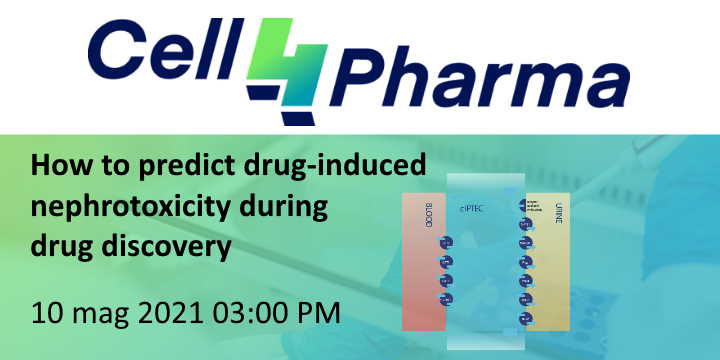
Webinar: How to predict drug-induced nephrotoxicity during drug discovery
Date: 10 Maggio 2021
Time: 3 PM
Join AstraZeneca Discovery Safety Specialist (Associate Principal Scientist) Dr. Anna-Karin Sjögren and Director for Safety Science and Discovery CVRM Dr. Mikael Persson as they discuss How to predict drug-induced nephrotoxicity during drug discovery.
Due to renal toxicity 20% of compounds fail during clinical stages of drug development.
ciPTEC is a human renal cell line that mimics the proximal tubule cells of the kidney. These cells are a main target for drug-induced kidney injury, caused by their role in highly efficient transport of drugs and toxic compounds from the bloodstream into urine. The most relevant drug transporter proteins involved in this process are stably and functionally expressed in our cell models.
Over the last decade, Cell4Pharma have developed a range of cell-based assays, with limited inter-laboratory variations.
A selection of our assays that were successfully applied in our ciPTEC models: cell viability assessment (MTT, WST8, cell count), transporter activity (Pgp, BCRP, MRPs, OCT2, OAT1, OAT3), receptor-mediated endocytosis (megalin/cubilin), metabolic enzyme function and expression (CYP, UGT, GST), cytokine production, 3D microfluidic cultures, cilia expression, gene expression analysis, LDH release, NAG release, miRNA secretion, ATP production, lactate production, O2 consumption, genetic modifications (CRISPR/Cas, baculo virus, lenti virus, retro virus), ROS production.
